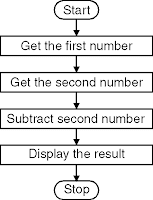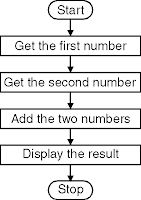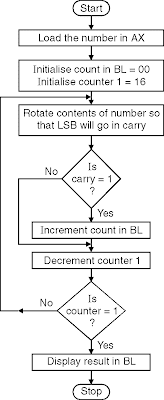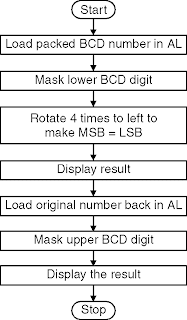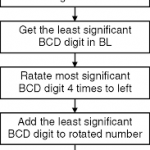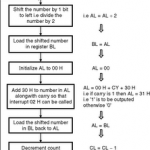Subtract Two 8 Bit Numbers Code Assembly Language
|
For example :
|
AL = 0A H
|
0A H
|
(10)10
|
|
|
BL = 04 H
|
–
|
04 H
|
(4)10
|
|
|
06H
|
Algorithm to Subtract Two 8 Bit Numbers
Program to Subtract Two 8 Bit Numbers
.model small
.data
a db 0AH
b db 04H
.code
mov ax, @data ; Initialize data section
mov ds, ax
mov al, a ; Load number1 in al
mov bl, b ; Load number2 in bl
sub al, bl ; subtract numbers and result in al
mov ch, 02h ; Count of digits to be displayed
mov cl, 04h ; Count to roll by 4 bits
mov bh, al ; Result in reg bh
l2: rol bh, cl ; roll bl so that msb comes to lsb
mov dl, bh ; load dl with data to be displayed
and dl, 0fH ; get only lsb
cmp dl, 09 ; check if digit is 0-9 or letter A-F
jbe l4
add dl, 07 ; if letter add 37H else only add 30H
l4: add dl, 30H
mov ah, 02 ; Function 2 under INT 21H (Display character)
int 21H
dec ch ; Decrement Count
jnz l2
mov ah, 4cH ; Terminate Program
int 21H
end
How to Run this Program
For Running this program you should have installed Tasm on you computer . If you have not installed Tasm yet please install from Here .

